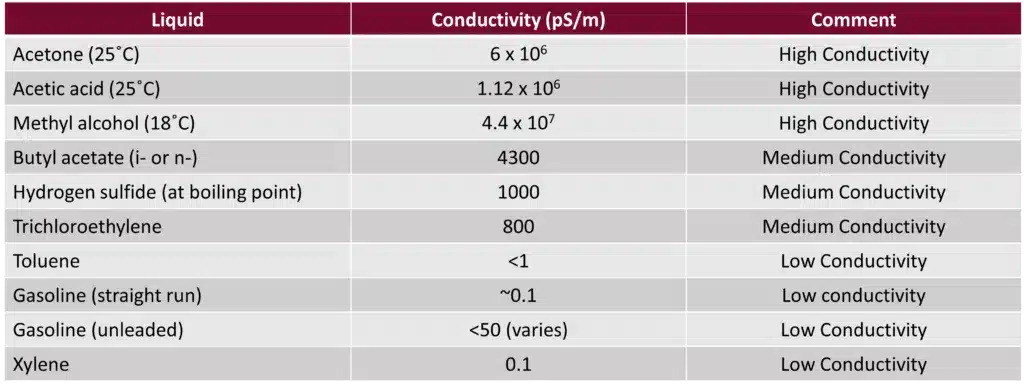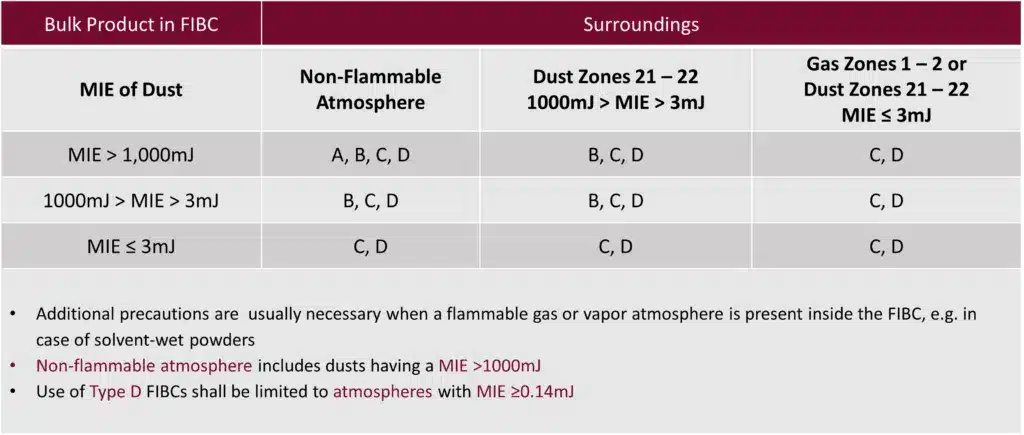Managing electrostatic hazards in facilities that handle both powders and liquids presents a significant challenge and as a result, specific guidelines are necessary to ensure safe handling and to enhance the overall safety of the processes involved.
Electrostatic hazards related to handling flammable liquids involve understanding the potential for charge generation during various liquid handling activities such as filling, sampling, filtration, and mixing. On the other hand, managing electrostatic hazards related to powder handling systems involve not only transfer but also dispersion, handling, and storage processes across manual and automated systems.
Static electricity is encountered in everyday situations, sometimes without even realising it. For instance, touching a metal surface or shuffling across a carpeted floor can result in a sudden shock, demonstrating static electricity in action.
An Electrostatic Hazard Assessment is a methodical approach employed to assess the risks associated with generating, accumulating, and discharging electrostatic charges in different settings. This process involves identifying potential sources of electrostatic discharge (ESD) and evaluating the probability and repercussions of such discharges, which may lead to hazardous situations. You can check out our accompanying blog post on “Electrostatic Hazard Assessment: An Informative Overview” to learn more about Electrostatic Hazard Assessment.
Common Electrostatic Property Terminology
Conductive Material: Conductive materials, like metals, are unable to retain an electrostatic charge when grounded. When not grounded, charge accumulation persists, but connecting the material to the ground allows the electric potential to dissipate. This characteristic makes conductive materials essential for preventing static buildup in situations where discharge is necessary, like handling flammable materials.
Static Dissipative/Antistatic/Semi-Conductive Material: These materials, like conductive ones, can accumulate charges, but they can release them at a higher rate. Unlike conductive materials which discharge to zero, static dissipative materials release charges gradually, minimising the risk of hazards. Despite potential residual charge accumulation, it’s typically not significant enough to cause harm or pose a threat to safety.
Nonconductive/Insulating Material: Plastics matirlas such as electronic pipettes allow charges to accumulate without a means of dissipating them. Even when grounded, the charge remains, making them unsuitable for handling flammable materials. Nonconductive or insulating materials, unlike conductive ones, resist the flow of electric charge. These materials allow charges to accumulate without dissipating them, making them unsuitable for situations where discharge is necessary. Even when grounded, discharging electrostatic charge from nonconductive materials is challenging due to their inherent properties.
Electrostatic Discharge: Electrostatic discharge refers to the phenomenon where charge equalisation occurs between objects with different electrostatic potentials or between a charged object and a grounded one. It manifests as the release of electrostatic energy in various forms such as sparks, brushes, cones, or corona discharge. For example, when charges equalise between two objects with different electrostatic potentials or between a charged object and a grounded one, electrostatic discharge occurs. Connecting two metals A and B with a bonding strip facilitates the transfer of charges, thereby equalising their potentials. Additionally, grounding aids in discharge by transferring charges to the ground, ensuring electrostatic potential equalisation.
Bonding & Grounding: Bonding electrically connects adjacent conductive objects to prevent voltage differences, essential for ensuring safety and preventing hazards. Grounding provides a path for electrostatic charges on bonded objects to dissipate to the ground, further minimising the risk of electrostatic discharge incidents.
Electrostatic Hazards in Powder and Liquid Handling Facilities
Electrostatic hazards in powder and liquid handling facilities are a concern whenever substances are manipulated or processed. These hazards arise throughout the varoius stages of using powder handling equipment, including mixing, transferring, packaging, pumping, pouring, and spraying. Any activity that involves the movement or manipulation of powders or liquids, including liquid dispensing, has the potential to generate static electricity and can result in dangerous situations such as fires or explosions. Effective mitigation strategies, such as bonding and grounding equipment, using static dissipative materials, or electrically grounded conductive plant equipment, are essential for ensuring the safety of personnel and the integrity of the facility.
Electrostatic Hazards in Metal (Conducive) Plants
In metal plants, metal objects can collect static electricity and create sparks. The strength of the spark depends on how much charge builds up on the metal object and its capacitance.
The formula for calculating the stored energy (spark) on an isolated metal object is E = ½CV2.
Where:
- E represents the stored energy (spark) on the isolated metal object.
- C stands for the capacitance of the isolated metal object.
- V is the voltage (potential) of the isolated metal object.
Examples:
- Fixed metal processing equipment like hoppers, mixers, dust collectors, sieves, dryers, and pneumatic conveying pipes can all accumulate static charge.
- Portable metal equipment such as drums and carts.
- Metal scoops, metal support cages for dust collector filters, and metal reinforcing wires in plastic hoses are also prone to static electricity buildup. Controlling Electrostatic Hazards – Metal Equipment
Controlling Electrostatic Hazards in Metal Equipment
To stop the accumulation of static charge, we need to connect the metal objects to the ground. This process is called grounding or earthing. It ensures that all objects have zero electrical potential (voltage).
For grounding to be effective, it’s important to ensure that the resistance is ideally less than 106 ohms, though in systems where all metal parts are grounded, the resistance typically falls between 10 to 25 ohms. To achieve this, multi-strand braided copper or stainless-steel bonding wires are recommended. These materials help establish a reliable connection to the ground, ensuring that static charge can be safely dissipated and reducing the risk of electrostatic hazards.
Several steps must be taken to ensure the effective grounding of metal equipment. First, it’s essential to identify all metal objects present within the process to ensure they are properly grounded. Next, the grounding itself must be carried out meticulously to establish a reliable connection to the ground. Additionally, regular inspections and testing of the bonding and grounding system are necessary to confirm its proper functionality and promptly address any potential issues. This comprehensive approach helps mitigate the risk of static charge accumulation and minimises the potential for electrostatic hazards in the workplace.
Controlling Electrostatic Hazards – Ref. Ground Point
Effective control of electrostatic hazards involves establishing reference ground points in each room as part of good facility design. Typically, rooms are equipped with bonding and grounding busbars, which serve as a central grounding point. Grounding cables connected to these busbars ensure that all metal objects and equipment within the room are reliably grounded, maintaining a zero potential. This setup ensures that all equipment is effectively bonded and grounded, minimising the risk of electrostatic hazards.
Controlling Electrostatic Hazards – Metal container
To maintain safety when handling metal containers, it’s crucial to adhere to proper grounding procedures. This includes ensuring grounding is maintained throughout filling and emptying operations and applying a grounding clamp before initiating any tasks. Opt for a grounding clamp with hardened steel points to ensure effective penetration through paint, corrosion, and material buildup.
Consistent prioritisation of grounding is essential, especially when working with containers that may have insulating coatings or corrosion. Neglecting proper grounding protocols can result in hazardous incidents, as evidenced by an incident investigation where failure to connect the grounding clamp led to unfortunate consequences. Ensuring a direct metal-to-metal connection is imperative, particularly when dealing with flammable solvents.
Electrostatic Hazards – Personnel
The human body, often overlooked as a potential ignition source, indeed serves as a conductor of electricity. When disconnected from the ground, it has the capacity to accumulate static discharge. For instance, during activities like dumping materials without proper grounding, significant charges can build up. If the ignition energy falls below 30 mJ, the discharged energy may be sufficient to ignite surrounding materials, whether in the form of vapor or gas. Various scenarios contribute to the accumulation of charge in an isolated individual:
- Walking on insulating surfaces
- Manually pouring powders and liquids from one container to another while wearing insulating footwear or standing on insulating flooring
- Coming into contact with already charged objects, such as Type A, B, and D FIBCs (supersacks), during filling and emptying
- Accidental brushing against objects while wearing insulating footwear
Under normal circumstances, the voltage (potential) on the human body can typically range from 10kV to 15kV. With a capacitance of about 200pF, the accumulated energy available for a spark can reach between 10 to 30mJ. It’s critical to acknowledge that electrostatic sparks originating from the human body have been implicated in numerous flash fire and explosion incidents.
Controlling Electrostatic Hazards – Personnel
To effectively manage electrostatic hazards, it’s essential to employ practical measures to dissipate static charges from the human body. This includes using static dissipative footwear in conjunction with conductive or static dissipative flooring, which provides a reliable means of controlling and dissipating static charges. The resistance to earth through static dissipative footwear and flooring should ideally fall between 106 ohms and 106 ohms. However, in certain applications, a resistance of 109 ohms may suffice, and it’s advisable to seek guidance from subject matter experts (SMEs) in such cases.
Grounding wrist straps offer an alternative solution but may not always be practical, especially in situations where personnel need to move around frequently. When using shoe covers, it’s crucial to ensure that they are static dissipative with a resistance-to-ground of less than 108 ohms. The total resistance to ground for individuals wearing electrostatic discharge (ESD) shoes and shoe covers combined should not exceed 108 ohms.
Additionally, when handling conductive (metal) objects, it’s necessary to use static dissipative gloves with a resistance-to-ground of less than 108 ohms. This requirement applies when the grounding of the conductive object relies solely on the body of the operator, without the presence of a direct grounding wire and clamp. These measures help ensure effective grounding and minimise the risk of electrostatic discharge incidents.
Electrostatic Hazards – Insulators
Electrostatic hazards often arise with insulating materials, which tend to accumulate charge but struggle to dissipate it. To mitigate these risks, it’s crucial to utilise conductive or static dissipative materials that can be properly bonded and grounded. Examples of insulative materials include plastic hoses, bags, liners, drums, and scoops. These materials typically have a surface resistivity greater than > 1011 ohm/square. Grounding insulating objects usually doesn’t result in the relaxation of charge to the ground. As a result, static charge buildup occurs, particularly within insulating containers holding powders and liquids. To address this, consider using conductive or static dissipative materials with a surface resistivity less than > 1011 ohm/square, especially when dealing with conductive powders or flammable vapors. Additionally, such materials are beneficial when handling charged powders and liquids to prevent hazardous static buildup.
Controlling Electrostatic Hazards – Plastic Liners
Managing electrostatic hazards, particularly with plastic liners, involves considering their surface resistivity and breakdown voltage. Depending on these factors, there’s a potential risk of “brush” discharges or “propagating brush” discharges. To mitigate these risks, it’s advisable to utilise static dissipative or conductive liners with a surface resistivity less than 10^11 ohm/square. However, if no flammable vapor atmospheres are present, insulating liners may be suitable, provided their breakdown voltage is less than 4kV. These measures help to minimise the likelihood of electrostatic discharge incidents and ensure safer working environments.
Controlling Electrostatic Hazards – Insulators
Addressing electrostatic hazards associated with insulators involves understanding the potential for electrostatic discharges from these items. Actions such as manual rubbing can charge insulating objects, leading to “Brush” discharges. These discharges are capable of igniting flammable vapor or gas atmospheres with a Minimum Ignition Energy below 4mJ. Furthermore, pneumatic transfer of powders or conveying non-conductive liquids through insulating hoses or pipes can significantly charge their inside surfaces, resulting in “Propagating Brush” discharges. When highly charged powders or liquids enter non-conductive containers, they can charge the inside surfaces and cause similar discharges. These “Propagating Brush” discharges have the potential to ignite flammable gas, vapor, and dust cloud atmospheres with Minimum Ignition Energy ranging from 1,000 to 2,000 mJ. Even with insulating hoses containing embedded metal spiral wire, “Propagating Brush” discharges remain possible from the inside surfaces. To mitigate these risks, it’s advisable to use grounded “conductive” or “static dissipative” hoses with volume resistivity below <109 ohm.m or surface resistivity below <1011 ohm/square. These measures help minimise the likelihood of electrostatic discharge incidents, promoting safer working conditions.
Controlling Electrostatic Hazards – Liquids
Managing electrostatic hazards related to liquids involves understanding the potential for charge generation during various liquid handling activities like filling, sampling, filtration, and mixing. Electrostatic charge can accumulate on low-conductivity liquids and liquids stored in insulating containers and vessels. Moreover, liquid mist, regardless of the liquid’s conductivity, can also accumulate electrostatic charge. Being aware of these potential sources of charge buildup is essential for implementing effective measures to control electrostatic hazards when working with liquids.

To ensure safety when handling liquids, it’s crucial to utilise electrically grounded conductive plant equipment. This includes pipes, vessels, containers, and other items, all of which should be electrically conductive and/or static dissipative and grounded. When blending conductive and nonconductive liquids, add the conductive liquid first to increase overall liquid conductivity. Additionally, consider incorporating conductivity-enhancing agents, such as antistatic additives, which are typically added in parts-per-million concentrations.
Filters and valves should be strategically located to minimize static charge generation, with valves having the maximum possible diameter. Control liquid entry to vessels by designing inlets to minimize the jetting of highly charged products and to reduce disturbance to vessel contents. Avoid splash filling through bottom filling, and if top filling is necessary, use a fill pipe directed toward the inner wall and ensure a gentle flow over the surface to the bottom of the tank. These measures help mitigate the risk of electrostatic discharge incidents during liquid handling operations.
Electrostatic Hazards – Powder Transfer
Electrostatic hazards related to powder transfer are a concern during handling and transfer operations. These activities can lead to the buildup of static charge on the powder particles within receiving vessels and containers. When highly charged insulating powder accumulates in containers, it can cause a partial surface discharge known as “Bulk” or “Cone” discharge. The energy of this discharge depends on factors such as the powder’s volume resistivity, electrostatic chargeability, particle size, and vessel dimensions. Larger particles and vessels typically result in higher energy discharges. However, transferring fine powder to grounded conductive drums is not expected to produce energetic Bulk/Cone discharges. These discharges can have energies of up to 25mJ, highlighting the importance of proper precautions during powder handling and transfer processes.
Electrostatic Classification of Flexible Intermediate Bulk Containers (FBICs) can be categorised as follows:
Type A: These containers are made from insulating fabric or plastic sheet without any provision for controlling static discharge. They should not be used in environments with flammable atmospheres having Minimum Ignition Energy (MIE) of ≤1,000mJ.
Type B: Constructed from insulating fabric or plastic sheet designed to prevent “Sparks” and “Propagating Brush Discharges,” Type B containers are safe for use in dust environments with ignition energies greater than 3mJ. However, there must be no presence of flammable vapors or gases.
Type C: These containers are made from fully inter-connected conductive threads and rely on grounding to prevent electrostatic hazards. They should have a resistance to the groundable point of <1.0×108 Ω. Type C containers are safe for use in environments with flammable vapors, gases, or dusts with MIE ≤3mJ.
Type D: Constructed from fabrics with special static protective threads and/or properties, Type D containers control discharge incendivity without requiring earthing. They are safe for use in environments where flammable vapors, gases, or dusts with MIE ≤3mJ are present.

Effectively managing electrostatic hazards in facilities handling powders and liquids requires following specific guidelines to ensure safe operations and strengthen overall safety. Through diligent attention to these factors, you can effectively control electrostatic hazards and create safer working environments in powder and liquid handling facilities while improving product quality and quality control.



